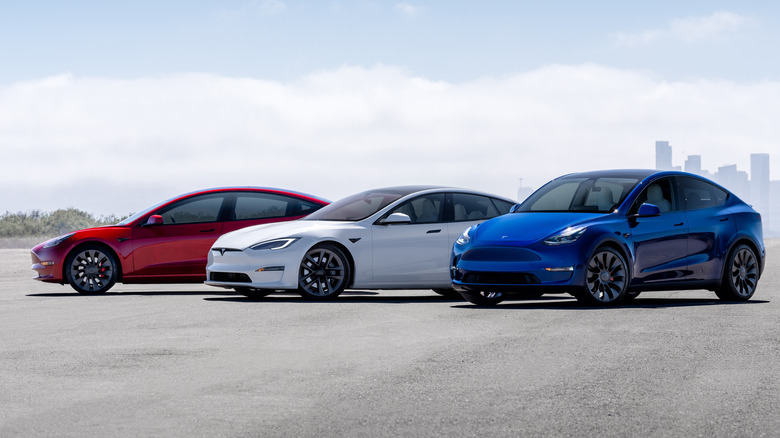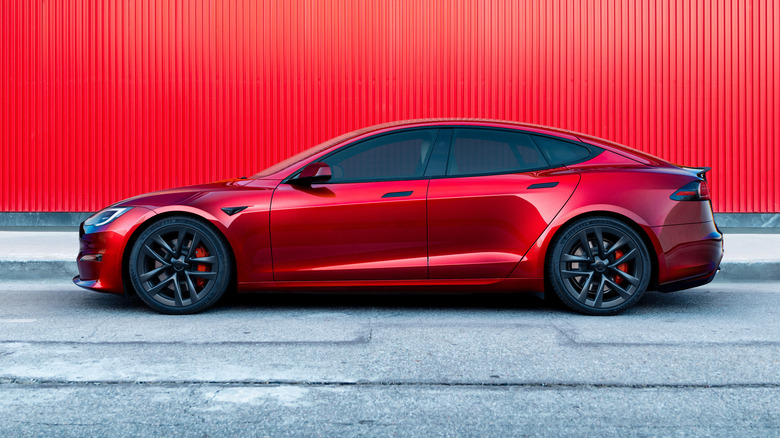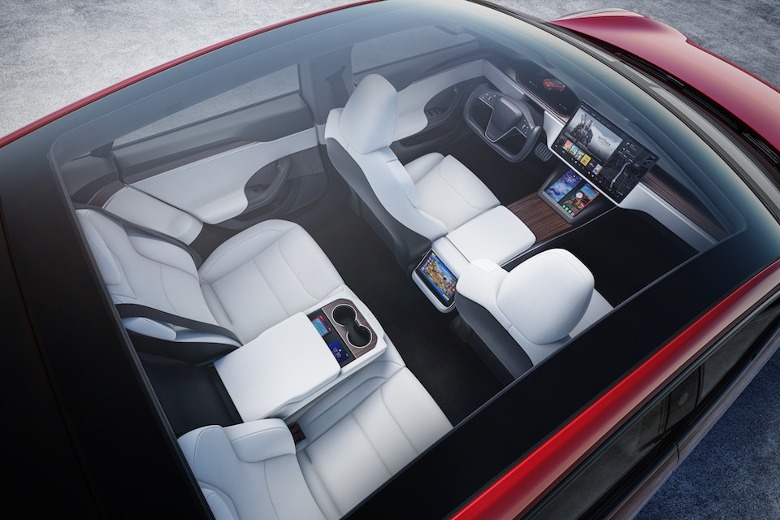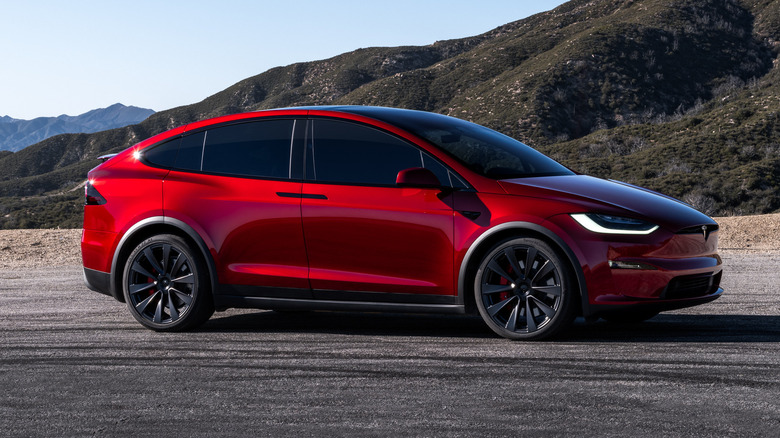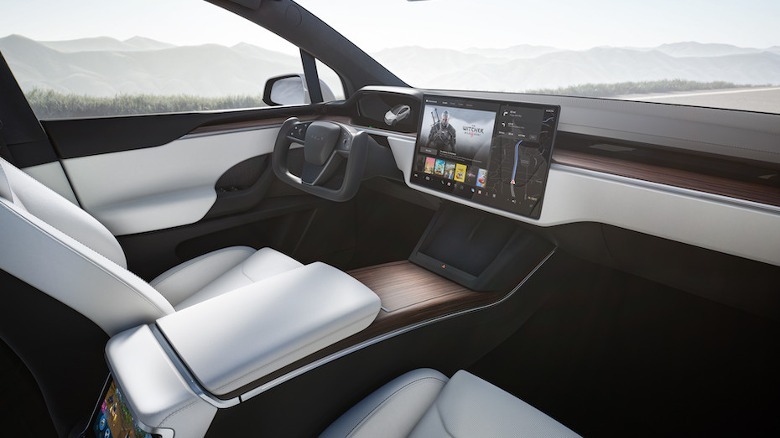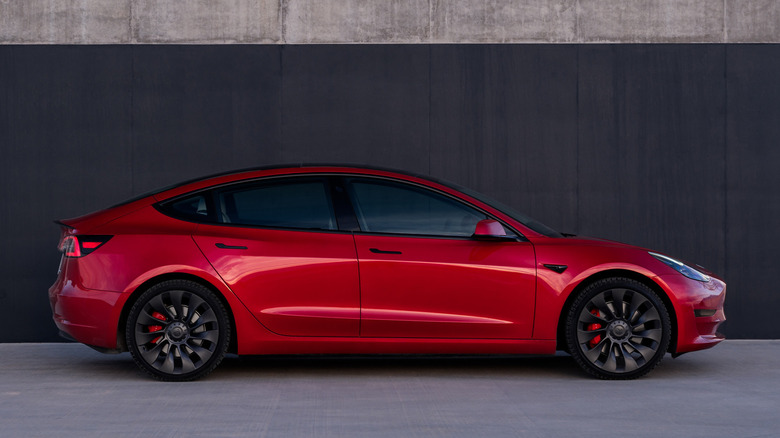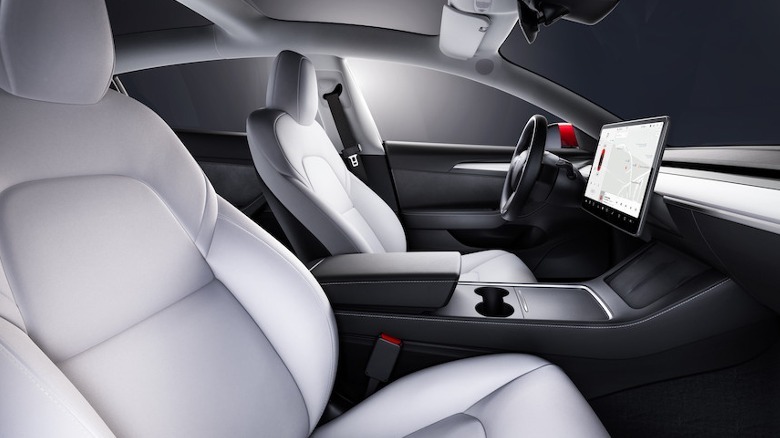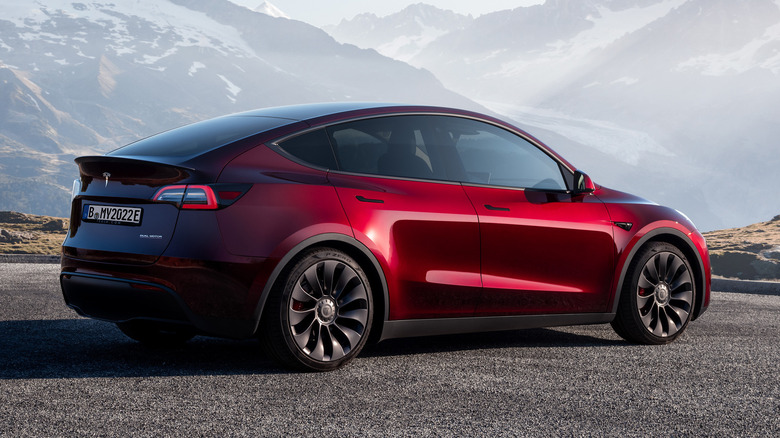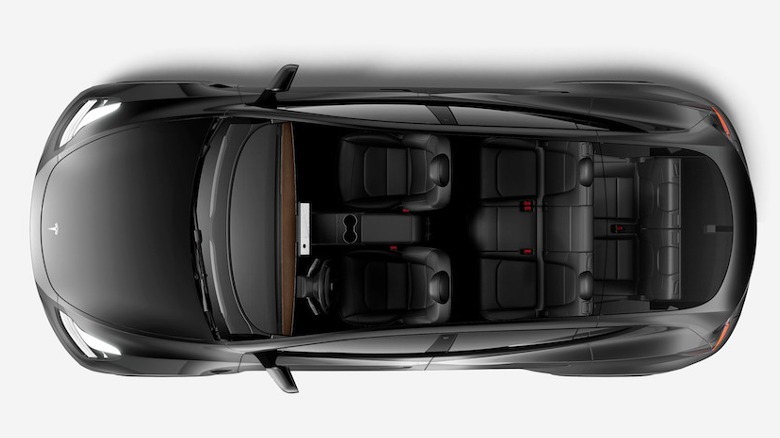Every Tesla Model Compared: Which Is Best For You?
Mention electric cars, and there's one automaker that will probably come to mind first: Elon Musk's Tesla. Though the American car company is no longer the only player in the EV space, with plenty of rivals launching their own electric SUVs, sedans, trucks, and more, it's arguably the most successful. Tesla has built a reputation on delivering some of the most range, the most effective public charging network, and being arguably the most aggressive automaker when it comes to pushing out new features.
It's hard to believe, in fact, that Tesla has only been producing cars since 2008. The original Tesla Roadster gave a taste of what the automaker had in mind, but it was undoubtedly a niche product: by the time Tesla discontinued the convertible in 2012, it had sold less than 2,500 examples. However, it had already done its job, ushering in the Model S electric sedan.
Now, Tesla has ambitions across the automotive spectrum. There's a second-generation Tesla Roadster on the roadmap, along with the love-it-or-hate-it Cybertruck electric pickup. The Tesla Semi saw the company expand into commercial logistics, and there have been long-standing rumors of an even smaller, cheaper Tesla EV. For the moment, though, potential electric car buyers have four Tesla models they should be considering.
Tesla Model S: The original mainstream EV
Launched in mid-2012, the Tesla Model S was a game-changer. While it may not have been the first electric car on the market, it upended assumptions that EVs were slow, compromised, or boring. Instead, the Model S proved conclusively that electric drive could entirely embarrass internal combustion performance cars when it came to speed.
Tesla's updates and upgrades to the Model S have been incremental, with the four-door going through multiple design and hardware refreshes. Today, the range consists of just two configurations, both with all-wheel drive. The entry-level is the Model S Dual Motor, priced at under $90,000, with 405 miles of estimated EPA range and a 3.1 second 0-60 mph time. Coming in just under $110,000, meanwhile, is the Model S Plaid, with three electric motors capable of propelling the EV from 0-60 mph in 1.99 seconds and hitting a top speed of 200 mph.
While its pace can't be questioned, arguments rage over whether the Model S has the luxury qualities to fully compete with rival high-end EVs from Mercedes, Porsche, and others. The reality is that Tesla's minimalistic interior aesthetic is at odds with a traditional interpretation of what's considered luxury, and the automaker's mixed track record with build quality has caused further hiccups along the way.
Still, as a test bed for high-tech battery, Autopilot, and performance features, not to mention range that puts most competitors to shame, those looking for a high-end, fairly timeless EV that basically qualifies as a modern classic should have the Model S on their shortlist.
Tesla Model X: The prestige family ride
Tesla's second car, the Model X, was never going to blend into the rest of the SUV segment. With its gullwing doors and aerodynamically-smoothed profile, the big EV promised the technology and performance of the Model S but with comfortable space for up to seven inside. Benefiting from several years of Model S development when it launched in 2015, the Model X saw Tesla at arguably its most ambitious.
The result was an SUV that, even today, stands out. Like the Model S, the Model X has been massaged and improved incrementally over the years, and today there are just two flagship configurations. The Model X Dual Motor starts at under $98,000 and boasts 348 miles of EPA estimated range, but can still do 0-60 mph in 3.8 seconds. The Model X Plaid adds a third electric motor, nudges the price to not far from $110,000, and can do 0-60 mph in 2.5 seconds while still being rated for 333 miles of range.
Inside, along with a spacious cabin and three rows of seats — easily accessed, too, thanks to those head-turning doors — families with a significant EV budget will find some of Tesla's cutting-edge technology. The aesthetic remains simplified, with the complexity saved for features like Autopilot. Tesla's controversial yoke steering wheel is available, too, though a traditional wheel is fitted by default. Really, though, the Model X is about peak space without feeling like you're driving a dreary family car.
Tesla Model 3: Electric on a budget
Electrification may have been the future, but electric cars weren't known for being affordable. Tesla upended that with the Model 3. Its smallest car would also be its most affordable and demonstrate how many potential Tesla owners were out there: more than 450,000 reservations by mid-2017 suggested Musk's promise of a $35,000 EV had hit home.
In reality, budget always took second place to what Tesla could build, though that didn't stymie sales. Now the top-selling plug-in electric car, the Model 3, starts at just under $40,000 in the U.S. The rear-wheel drive vehicle is rated for 272 miles and will do 0-60 mph in 5.8 seconds: slower than a Model S, certainly, but a fraction of the price, and still more than competitive against EV rivals.
The Model 3 Performance, at under $53,000, adds a second motor for all-wheel drive, cuts the 0-60 mph time to 3.1 seconds, and bumps range up to 315 miles. Tesla's strategy of minimizing physical controls in favor of a big touchscreen has seen the Model 3 at the forefront of the company's software-first approach. Regular over-the-air (OTA) updates have unlocked everything from more range to advanced driver assistance: the Model 3 parked outside today can be a very different car from the EV it was on delivery.
Today, newer rivals are meeting Tesla on price, as well as on range and performance. Still, few have the aggressive OTA cadence, and for those on the bleeding edge there's little that can match the Model 3 for gadgets-per-dollar. Throw in the reassurance of the Supercharger network, and it's no surprise that Tesla's cheapest car is still a heavyweight, despite the competition it helped inspire. That'll only be more obvious when Tesla's rumored refresh of the Model 3 kicks off.
Tesla Model Y: The all-rounder
If the Model S set the stage, the Model X added space, and the Model 3 cut the price, then the Model Y is arguably Tesla's Goldilocks EV. Capable of seating up to seven, yet with impressive performance, range, and at a relatively attainable cost, it's no surprise that the Model Y has become one of the automaker's most popular models. Not bad for an EV that only began production in early 2020.
Looking like a slightly-inflated Model 3, the Model Y puts that extra heft to excellent use. The cabin is noticeably more spacious, while dropping eye-catching (but at times finicky) features like the "Falcon Wing" doors of the Model X allowed the electric crossover to be more affordable as well as easier to build and more reliable. Despite currently starting at under $47,000, the base Model Y still includes dual motor all-wheel drive as standard. It's rated for a solid 279 miles of EPA estimated range and will do 0-60 mph in 5.0 seconds.
The Model Y Long Range, still under $50,000, improves range to 330 miles and trims the 0-60 mph time to 4.8 seconds; it's also the only configuration available with seven seats rather than five. Finally, the Model Y Performance promises 303 miles of range but a 3.5 second 0-60 mph time, from under $54,000. That holds up as a surprisingly good value, even as rival EVs swarm the Model Y's segment.
Like the Model 3, the Model Y is at the forefront of Tesla's software roadmap, with an update cadence that puts most competitors to shame. For families looking to go electric, without wanting to sacrifice range and convenience along the way, it's hard to argue that the Model Y isn't in the sweet spot in Tesla's portfolio.
